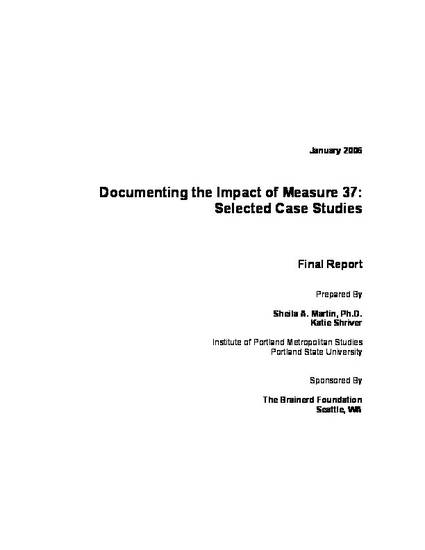
- Land use -- Law and legislation -- Oregon,
- Right of property -- Oregon,
- Real property -- Oregon -- Valuation,
- Land use -- Law and legislation -- Case studies
Oregon has long been known for progressive planning policies and visionary government. The passage of Senate Bill 100 in 1973 ushered in Oregon’s modern era of land use planning and reflected a commitment by Oregonians to the protection of farm land and other natural resources while planning for substantial urban growth. Many other states have envied Oregon’s framework as they struggle with the pressures of urban sprawl. While other states were quickly converting farmland to residential uses, Oregon converted just over one percent of its farmland to other uses between 1982 and 1997.
On November 2, voters in Oregon chose to approve Measure 37 by a fairly wide margin. Although the message implied by that vote is widely debated, one thing is clear: Measure 37 has disabled the tools used over the past four decades to prevent sprawl and preserve agricultural and forest land in Oregon. We suspect that, based on experience in Florida with a similar measure, Measure 37 will also have a chilling effect on innovation in land use planning within local government. Although the legal status of the Measure is currently unclear (see below), we expect opponents of the land use system to continue to press for weakening these tools in Oregon.
Efforts are underway to pass similar measures in other states. For example, property rights advocates are working in the state of Washington to make another attempt similar to failed Referendum 48, which was rejected by Washington voters in 1995. Before such an initiative is approved by voters, it is important that they understand how Measure 37 will affect land use planning in Oregon. However, the full impact of Measure 37 will be slow to unfold, as the courts make decisions about issues such as the transferability of waivers, the applicability of exceptions, and the rights of local governments to create a cause of action for neighbors affected by Measure 37 waivers.

Produced by the Institute of Portland Metropolitan Studies, Portland State University.